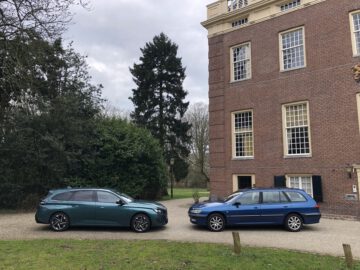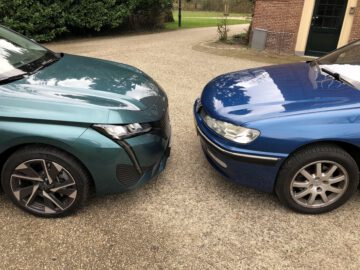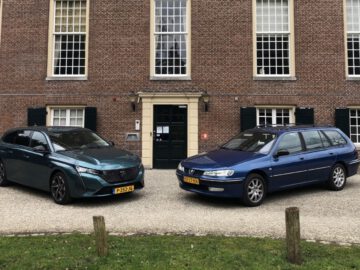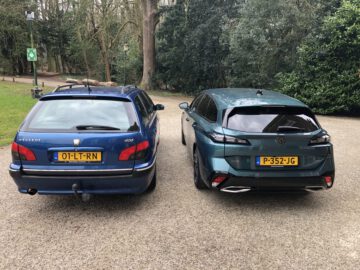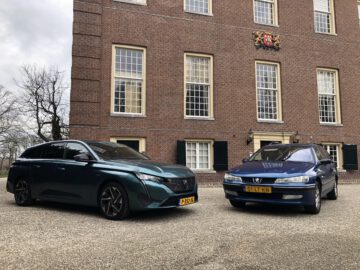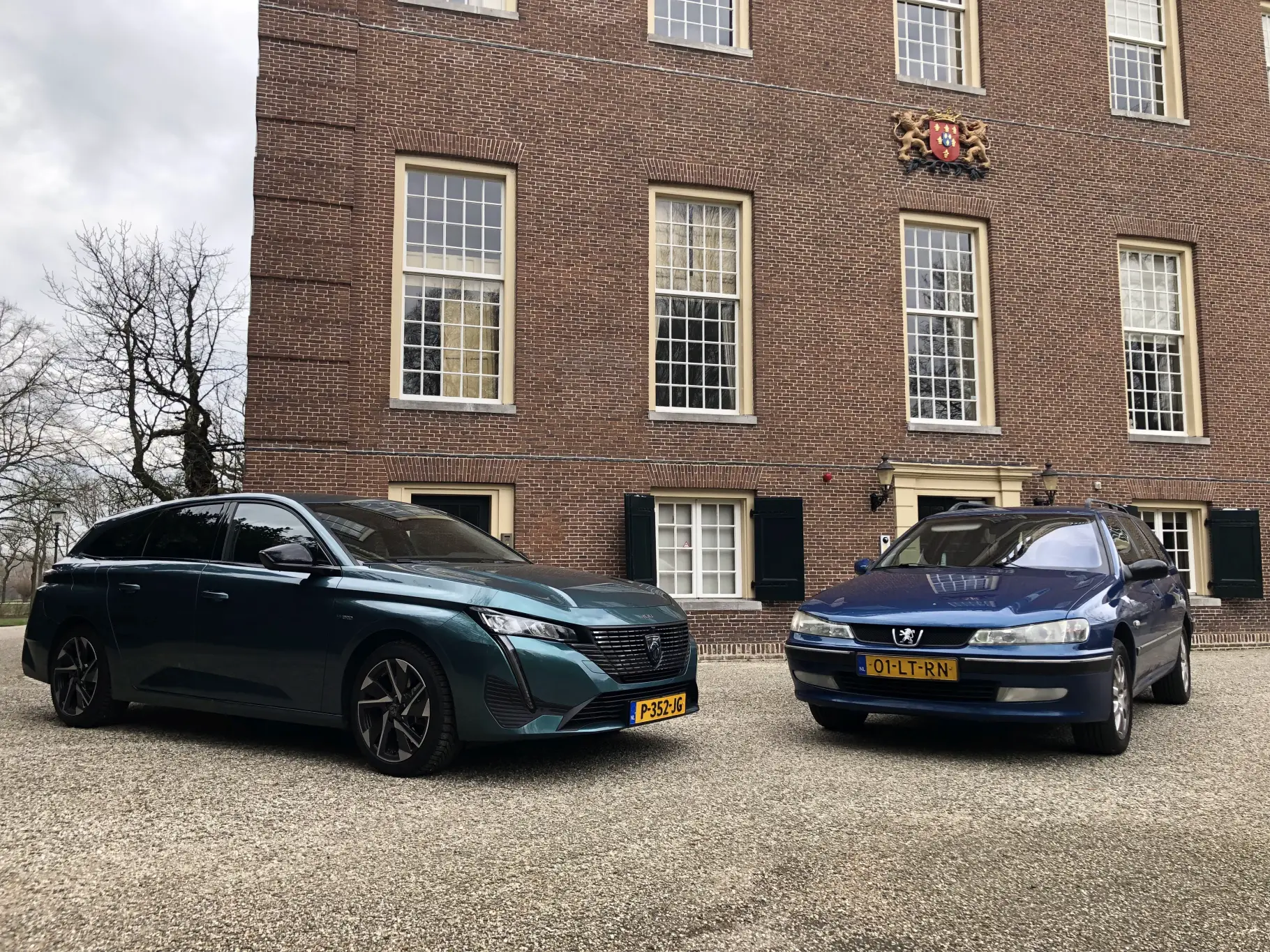Twenty years of evolution: Peugeot 308 SW HYbrid180 (2023) – Peugeot 406 Break 2.2 16V GT (2003)
You have car enthusiasts whose preference for a particular brand has been hardwired into them. I am such a car enthusiast myself. As a little boy, I sat in the back of my father’s 605 full of admiration; after I got my driver’s license, I made my first miles in my mother’s black 205 and later my own blue 205 Génération. When this 406 Break came up for sale, I immediately gasped.
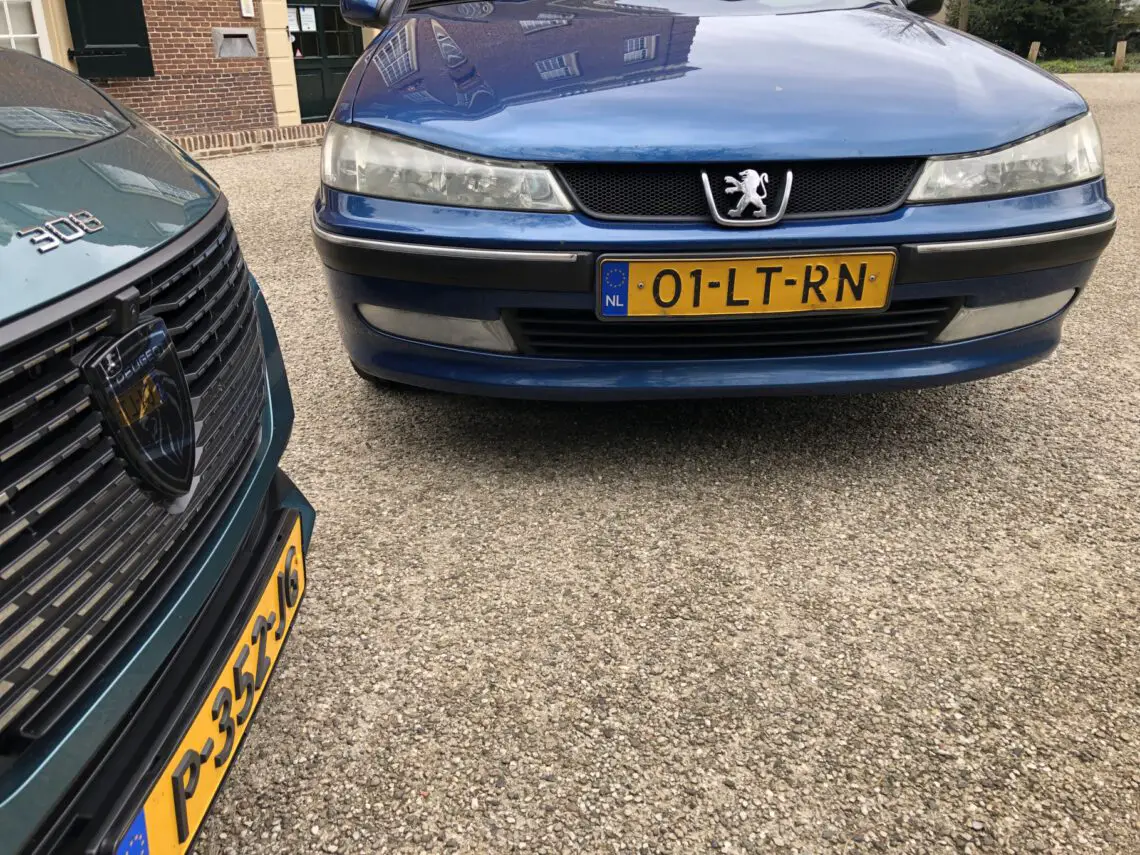
Some “connoisseurs” say Peugeot stopped building beautiful, reliable and pleasantly handling cars after the turn of the millennium. Is Peugeot striking back with this new 308 SW HYbrid180? In comparing it to the old 406, do we see mostly differences or also striking similarities? And what remains of my love for this cherished 406?
308 versus 406: the hard numbers
Let’s start as objectively as possible: hard numbers, they don’t lie. Those who ordered a 406 in this version in 2003 paid about 28,000 euros for it. If you apply an inflation adjustment 20 years later, you end up with about 45,000 euros. Surprisingly, that is also the new price of our tested Peugeot 308 SW HYbrid180: it costs 45,510 euros.
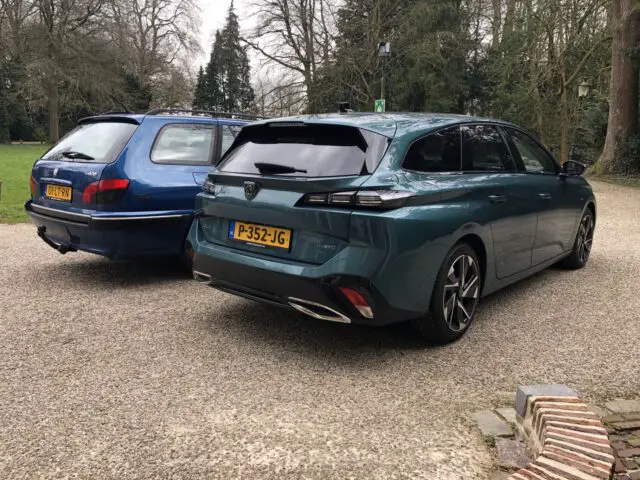

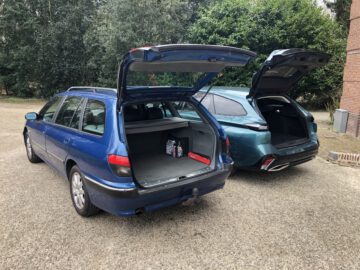
These are cars in different segments: the 308 SW belongs in the C segment, the 406 Break in the D segment. Still, the space offerings are very similar, both inside and out. The 308 has a slightly longer wheelbase, but still offers less headroom in the rear. In the 308, well, you make concessions because of the battery pack. Still, luggage space in both cars is downright generous: 548 liters (1574 liters with the rear seats flat) compared to 526 (1741 liters with the rear seats flat) in the 406 is certainly not bad.
Technology and innovation
In terms of technology, time has by no means stood still. Just look at the modern hybrid powertrain of the 308 SW HYbrid180. A 150 hp 1.6-liter four-cylinder turbocharged gasoline engine plus 110 hp electric motor, good for 180 hp of system power and 360 Nm of pulling power. Feel free to leave shifting to the 8-speed automatic transmission, which you can also operate with flippers on the steering wheel. You can also get your 308 with only gasolineor diesel engine, but there are also several hybrid and all-electric versions.
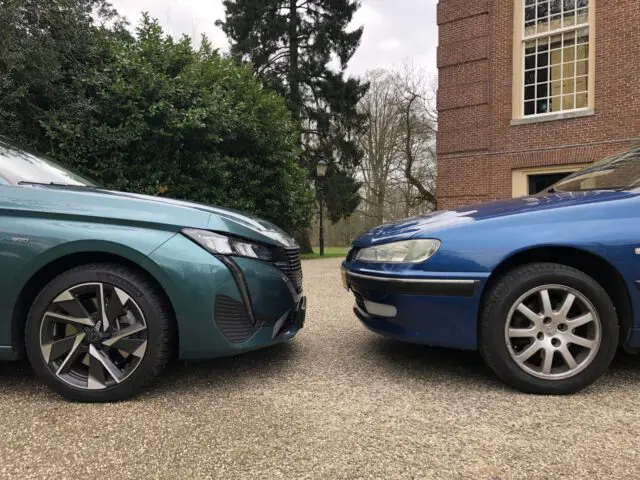
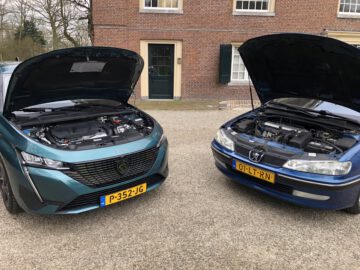
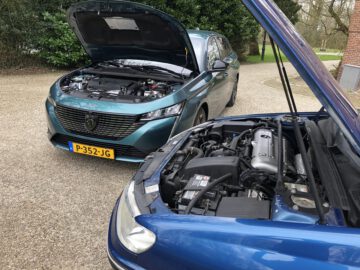
The 406 was available with modest 1.8 and 2.0 four-cylinder gasoline engines, rock-solid HDi diesels and – in the top versions – potent V6 gasoline engines. The golden mean is the gasoline engine in my 406: a 2.2-liter four-cylinder with 160 hp and 217 Nm of torque. Sufficient power, but not extravagant. Drive to the front wheels is via a five-speed transmission that you have to operate – very old-fashionedly – by hand.
Driving Experience
After just a few miles, you already notice how completely different the driving experience these two cars offer on the road. Consider them a luxury horse and a workhorse. With its hybrid power source, the 308 HYbrid180 mercilessly trumps its 20-year-old stablemate. He is quieter and more civilized, but at the same time feels eager. It accelerates effortlessly and without sweating, but meanwhile is noticeably more fuel efficient and less polluting than the old 406. It delivers its power dutifully and without delay, has a linear power delivery and courageously drags the estate car forward even from low revs.
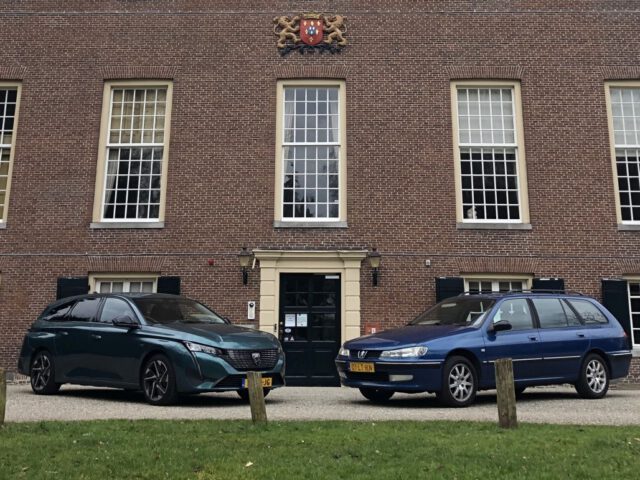
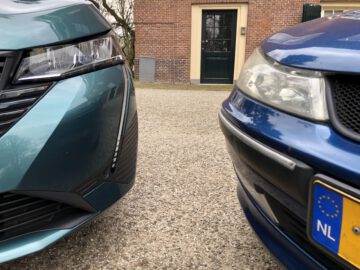
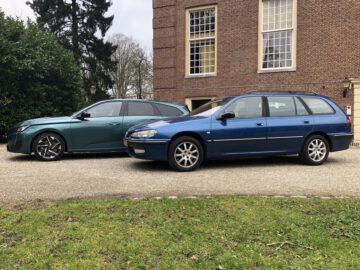
Those who would drive the hybrid 308 only electric would theoretically never need to refuel. In this HYbrid180 you can travel about 50 kilometers in silence and comfort. Charging the battery quickly takes 3 to 4 hours. Still, in our test we find that you will not reach the consumption of 1.1 l/100km (WLTP) promised in the brochure in practice. Rather, count on 5.5 l/100km with occasional electricity recharging. And oddly enough, this is not even that much different from the old 406, which rewards a quiet driving style with a combined consumption of 6.5 l/100km. And thanks to 70 liters of tank capacity (the 308 swallows 40 liters), you can drive 1000km between refueling stops.
Each has its own story
Each of these two Peugeots tells its own story with its interior. Getting into the 308 SW feels like a carefully tailored suit with a healthy dose of prestige. Its powertrain is not distinctive; it is also in other hydride models of the Stellantis group. What is distinctive and impressive, however, is the modern i-Cockpit, with compact sports steering wheel and overhead indicators. The large information screens, which you can configure endlessly, offer a plethora of information on the road about the hybrid powertrain’s consumption, live traffic and endless DAB radio stations.
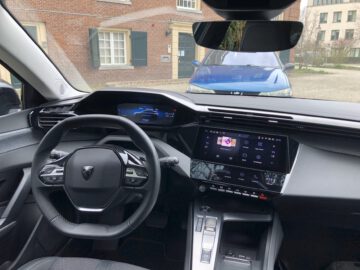
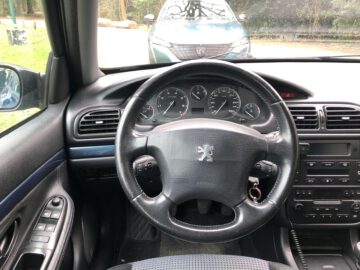
After the 308’s sleek cockpit, you really step back in time with the 406. The interior looks simple, uncluttered and dated. Even by the standards of the time, the 406 did not fare well. But it is robust and durable: all functions – including automatic lights, wipers, cruise control, climate control, audio controls on the steering wheel – work flawlessly even after 20 years. Yet the 308 impresses with an absolutely higher quality experience.
Renewal/improvement
In short, times are changing. In the 406, you hope no button or slider breaks off, while the 308 is more likely to suffer from faltering software or a frozen infotainment screen. And what will a 15-year maintenance job look like on the technically complex hybrid 308? Perhaps innovation is not always an improvement. Three concrete examples:
- In the 308, you notice how the many driving assistance systems, which sometimes intervene abruptly, limit your autonomy as a driver. The cruise control intervenes abruptly if you approach your immediate predecessor too closely. This is safe, but such an operation is sometimes tedious. With the cruise control in the 406, you don’t suffer from that.
- Yes indeed, the hybrid powertrain in the 308 HYbrid180 is economical, quiet and clean. But the promised WLTP figures are far from day-to-day reality. You also need to recharge or refuel this 308 regularly. The 406 makes less strong promises, but then delivers.
- In the modern 308, you almost need prior technical training to operate all the functions. You can spend a full day configuring all the systems completely to your liking, including the app for your smartphone. In my test week, I failed to activate Lane Change Assist. That complexity, the 406 doesn’t suffer from that.
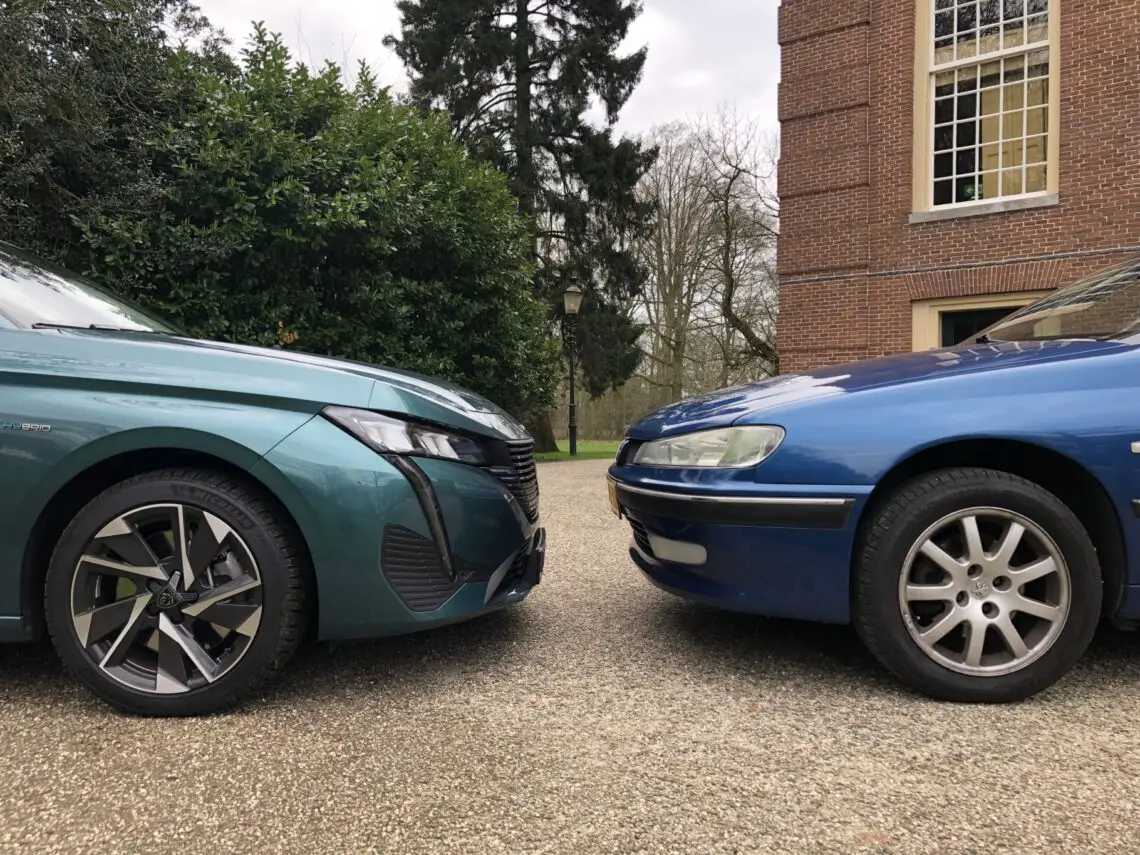
Want a distinctive car that you won’t find on every street corner? Then opt for the slowly disappearing Peugeot 406. An honest, solid and richly equipped pack mule with a good-natured character. If you ask me, its design is still fresh and elegant, especially when compared to contemporaries such as the Ford Mondeo, Opel Vectra or Toyota Avensis. You forgive him after 20 years and 300,000 kilometers his cosmetic imperfections, missing pixels in the display and the French creak in the interior.
However, there’s no getting around it: objectively, the Peugeot 308 SW HYbrid180 is a better, more modern and efficient car in every way. A pleasantly steering, comfortable and versatile station wagon with modern powertrain and impressive interior. But will I look at the 308 SW in 20 years with the same endearment as I look at my 406 Break? Only time will tell.
